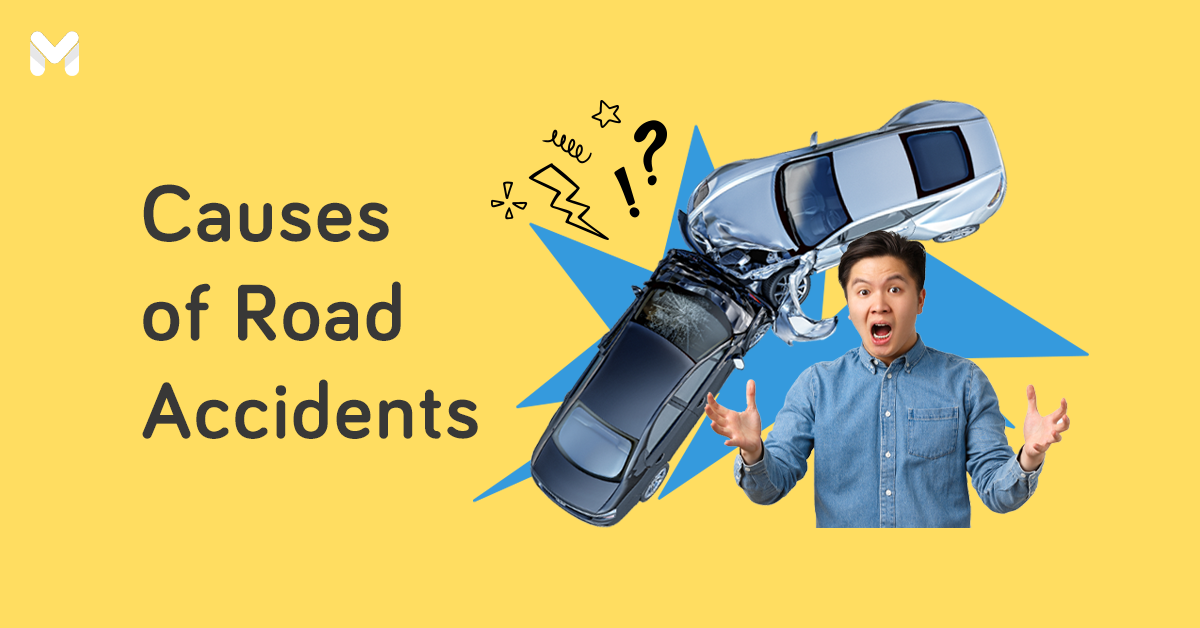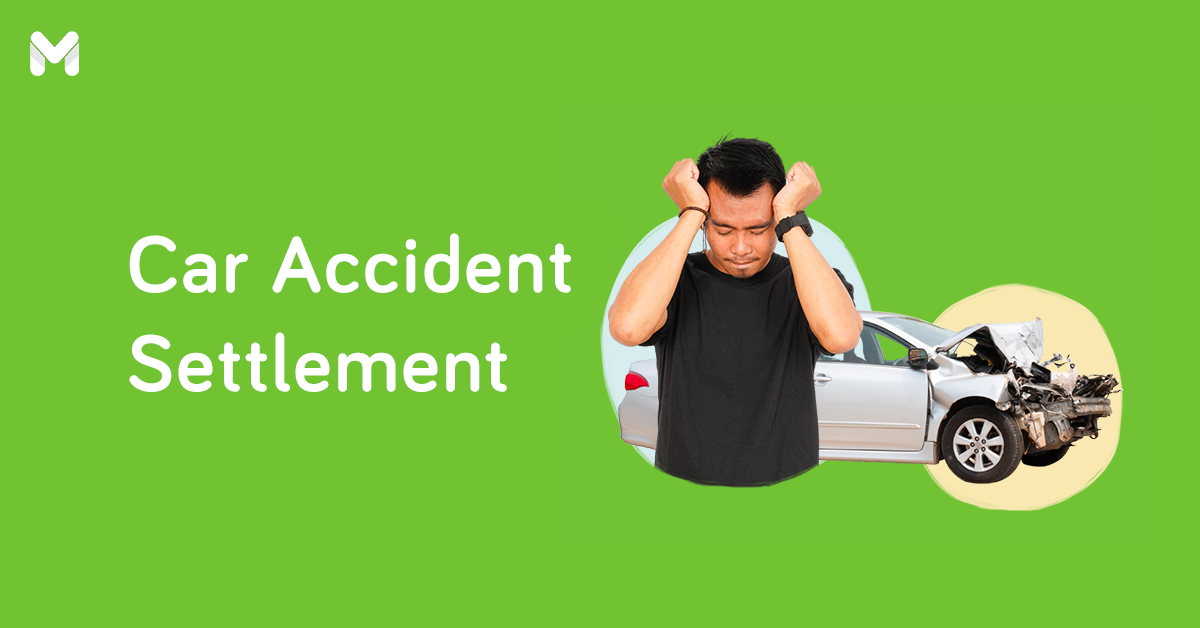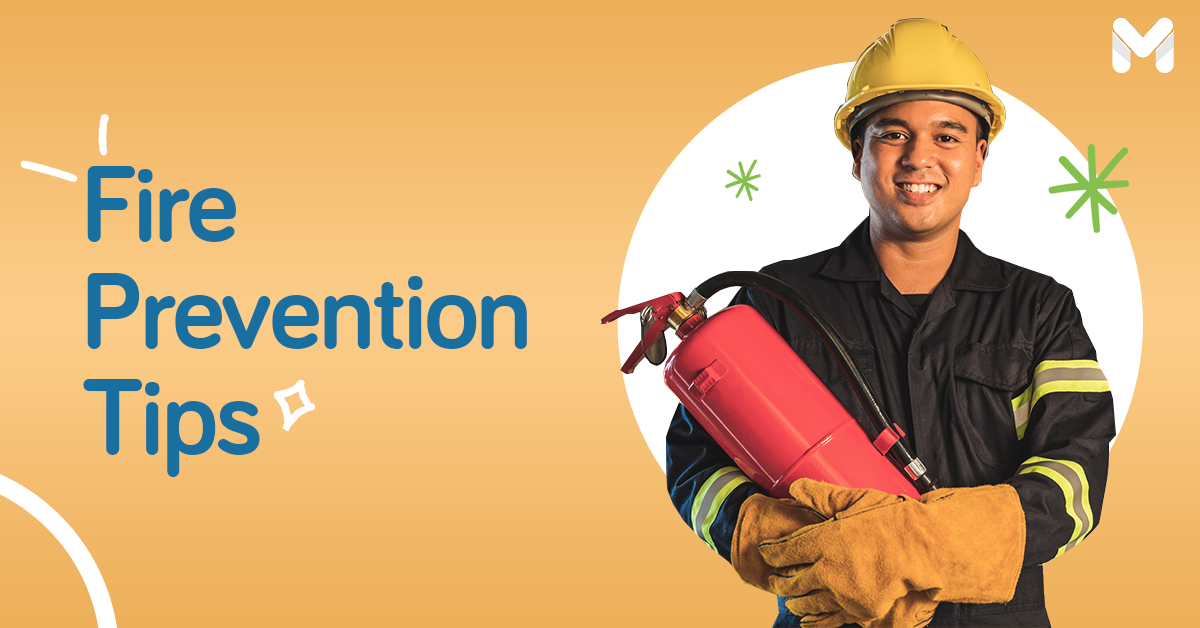Looking stressed and helpless while stranded on the highway with a busted engine or flat tire is every motorist's worst nightmare. Unfortunately, car breakdowns do happen—and they're both dangerous and costly.
So what to do if your car broke down? How do you ensure your safety during a roadside emergency?
Keep these life-saving tips to keep in mind when your car breaks down on the highway.
7 Common Reasons a Car Breaks Down
-1.png?width=600&height=400&name=Pics%20for%20blog%20-%20600x400%20(63)-1.png)
“My car broke down on the highway. What could be the reason?” It may be one of the following:
❌ Dead Battery
One of the most common reasons is a dead or faulty battery. If the battery’s dead, the car engine won't start.
Watch out for signs of a dead battery, such as the engine starting and then dying right away, the absence or dimness of headlights, and an oddly shaped battery case. If you smell something weird (like rotten eggs), chances are there’s an acid leak in your battery.
❌ Damaged Wheels or Tires
Tires are tough, but they are still subject to damage. Potholes and sharp objects on the road can puncture your tire.
If one of your tires gets damaged, make sure the spare is in good condition before you install it. After all, it might have been in your trunk for quite some time.
If you don’t know how to change tires, don’t risk it. You may do it incorrectly, thus causing more damage and endangering yourself and your passengers.
❌ Faulty Engine
The engine is what makes the car run. If there's something wrong with its parts, your auto won't work properly.
A faulty engine arises from a variety of issues. These include oil and debris deposits, old and damaged spark plugs, coolant leaks, and inadequate lubrication, among others.
❌ Fuel-Related Issues
Another obvious reason behind car breakdowns is the lack of fuel. Fuel powers the engine. Your car cannot move if it's running low.
The wrong fuel type can also cause a breakdown. In such cases, refrain from moving your car. Otherwise, the engine will get damaged.
Instead, call a towing company and let the service center drain the engine.
❌ Electrical Problems
Your car is outfitted with various circuits that allow you to perform a variety of functions, such as turning on the air conditioner and controlling your stereo. A damaged electrical component may make your car stop while you’re on the road.
One common issue is the faulty alternator. This component recharges your car’s battery and distributes electricity throughout the car. If it’s damaged, your battery will be affected, causing the vehicle to stop.
❌ Overheating
A recurring overheating issue is usually a sign that your car engine has sustained serious damage. If the engine is damaged, your car is bound to break down sooner or later.
Watch out for the level of your car’s coolant as well. If the level drops, you may need to inspect if there is a leak.
❌ Starter Motor Damage
Modern starter motors are more durable than ever. However, that doesn’t mean they can't get damaged.
If the battery doesn’t seem to have a problem but your car still won’t start, you can deduce that your starter motor is damaged. Unfortunately, you cannot predict when this issue might strike. Experienced drivers say that this problem may appear if your car has already run thousands of miles.
10 Steps to Follow if Your Car Broke Down Mid-Drive
-1.png?width=600&height=400&name=Pics%20for%20blog%20-%20600x400%20(64)-1.png)
You never know when a roadside emergency might happen, so it's best to always prepare for the worst. Follow the steps below if you ever find yourself thinking, "What do I need to do if my car breaks down?"
Step 1: Stay Calm
Freaking out is the absolute worst thing you can do in the face of an emergency. If you let the situation rattle you, you might get into further trouble by accidentally slamming your brakes hard or making a sudden lane change.
As soon as you notice that something's wrong with your vehicle, resist the urge to panic and instead put on your thinking cap. You need to stay alert from this moment on so as not to compromise your safety, as well as that of other motorists.
Step 2: Turn on Your Hazard Lights
The ability to think on your feet is crucial during those first few seconds or minutes when your car breaks down mid-drive.
The moment you feel your car stalling, turn on your hazard lights to alert other motorists that there's something wrong. Drivers will then know to drive around you. This way, you can get more space.
If the emergency happens at night or in bad weather, make sure to also turn your sidelights on. Also, turn off anything that can run down your battery because you don't know how long it'll take before your vehicle gets fixed.
Read more:
- 10 Driving Tips to Make Late-Night Driving Safer
- How to be Safe During the Rainy Season? Follow These Road Safety Tips
Step 3: Pull Over to the Side
So what to do if your car breaks down in the middle of the highway? Pull over to the side immediately. Look for an opening to get your car out of the flow of traffic.
If you stop at a designated emergency bay, all the better. But if one isn't in sight, any safe location will do.
Don't attempt to get out of your vehicle before completing this step. Don’t expose yourself on the highway—it’s a fatal road mistake that can cost you your life.
Before you get out to inspect your vehicle, make sure it's safely parked in a flat and visible location, far from any road curves, to avoid any safety risks to yourself and other motorists.
Step 4: Engage Your Parking Brake
Once your car is safely parked, turn your wheels away from the road and engage your parking brake or emergency brake—they’re the same thing for most cars. This way, you establish another layer of safety for everyone and avoid the risk of accidentally rolling back into traffic.[1]
With that worry out of your mind, you can now focus on other concerns, like how to fix your car or how to get help.
Step 5: Make Your Car as Visible as Possible
-1.png?width=600&height=400&name=Pics%20for%20blog%20-%20600x400%20(67)-1.png)
Let's say your car broke down on the highway and you've followed the steps above. But those aren't enough.
Poor car visibility is one of the top causes of road accidents in the Philippines. To maximize your car's visibility, prop up the hood. This will make it clear to other motorists that your car is faulty and that they should proceed with caution.
If you have some in your car emergency kit, set up reflective triangles behind your vehicle or LED flashers on the trunk.[2] These additional visible indicators will make it easier for your car to be found when help is on the way.
Step 6: Assess the Condition of Your Vehicle
Next on the list of what to do when your car breaks down is to check the situation at hand.
What exactly is the reason behind the sudden breakdown? Did you just run out of fuel? Is your ignition switch malfunctioning? Are the sensors faulty? Or does it have something to do with the battery?
Look up troubleshooting tips to find out what's wrong with your vehicle. Even if it’s something simple like a flat tire,[3] assess whether you have the skills and equipment to fix it yourself. If not, just leave it alone and let a professional handle it.
Step 7: Call for Help or Roadside Assistance
Right from the onset, start thinking about who to call when your car breaks down. Even if you think the issue is manageable, it's best to let a relative or friend know about your situation. They can send help your way when things go south.
Take a good look at your surroundings so you can provide specific details about your location. Pay special attention to landmarks. You can also send your GPS coordinates for easy reference.
Check if your car insurance policy covers breakdowns and offers emergency road assistance like towing services, fuel delivery, and minor repairs.
🛡️ Get a Free Car Insurance Quote
Don’t have car insurance yet? Below is a list of car insurance companies. Compare your options and get a free car insurance quote from Moneymax!
| Car Insurance Company | Maximum Total Sum Insured | CTPL Coverage | Own Damage & Theft Coverage | Acts of Nature Coverage | Death / Disablement Coverage |
|
FPG Insurance
|
₱4 million
|
✔️
|
✔️
|
✔️
|
|
|
Malayan Insurance
|
₱7.5 million
|
✔️
|
✔️
|
✔️
|
|
|
The Mercantile Insurance Corporation
|
₱5 million
|
✔️
|
✔️
|
||
|
OONA Insurance (formerly MAPFRE)
 |
₱5 million
|
✔️
|
✔️
|
✔️
|
✔️
|
|
PGA Insurance
 |
₱3 million
|
✔️
|
|||
|
SGI Philippines
|
₱5 million
|
✔️
|
✔️
|
✔️
|
|
|
Standard Insurance
|
₱5 million
|
✔️
|
✔️
|
✔️
|
✔️
|
|
Stronghold Insurance
|
₱3 million
|
✔️
|
Step 8: Stay Vigilant While Waiting in Your Vehicle
While waiting for help to arrive, stay inside your vehicle, especially if you're stuck on an accident-prone road. The last thing you want is to get caught in another mishap while already in the middle of an emergency.
Also, think twice about accepting help from a stranger. While it's ultimately your call if you're going to engage or not, keep in mind that just as there are well-meaning Pinoys who stop by to help distressed drivers, there are also scammers and thieves who may jump at the opportunity to approach you at your most vulnerable.
Exercise good judgment when someone offers unsolicited rides, tows, or car check-ups. If the stranger behaves suspiciously, don’t let them get access to your car—just lower the window a bit so that you can talk to them. If help is already on its way, thank the stranger and politely decline the offer.
Read more: Top 5 Metro Manila Cities with the Most Car Thefts
Step 9: Don’t Leave Your Car Unattended
One practical tip on what to do when your car breaks down on the highway is to keep your eye on it at all times. If you can't help but get out of your car, at least stay within the vicinity. Don't wander off, especially if you're not familiar with the area.
If it's absolutely necessary for you to go somewhere else, make sure to leave a note on your vehicle so that when your contacts arrive, they will know to either wait for you or fetch you from another location.
Step 10: Take Your Car to the Shop for Repair
Let's say everything has been sorted out and your car is finally out of the road. Does your car breakdown saga end here? That depends on what the issue was in the first place and whether the help you received was just a quick fix or the real deal.
If your car needs to be thoroughly looked at, take it to the repair shop as soon as possible. Tell them, "My car broke down on the highway," and lay out every detail you know. This may help them properly diagnose the problem and do what's necessary to remedy it.
Related: Eyes on the Road, Hands on the Wheel: What to Know About the Anti-Distracted Driving Act
How to Prevent Car Breakdowns in the Future
-1.png?width=600&height=400&name=Pics%20for%20blog%20-%20600x400%20(65)-1.png)
Now that you know the answer to “What to do if my car breaks down?”, take these measures to avoid similar accidents in the future:
✔️ Follow a Maintenance Schedule
If you own a car, you need to be responsible enough to take it to the mechanic regularly. Routine check-ups expose problems, giving you time to address them before they get worse.
Maintenance activities, like oil changes and battery tests, ensure that your car is in top shape. Ultimately, they keep your vehicle from breaking down on the road.
✔️ Always Check the Tire Pressure and Car Fluids
Before driving, make sure that your tires are properly inflated. If they’re underinflated, you’ll find it difficult to drive your car. On the other hand, overinflation may cause the tire to burst and lead you to lose control of the car.
Also, see to it that your car’s essential fluids are enough. These fluids ensure that the engine works properly. For instance, a car with the right coolant level will prevent the engine from overheating.
✔️ Take Note of Odd Noises
Strange noises are tell-tale signs there’s something wrong with it. If you hear something you never have before, it may be time to take it to the service center. Take note of grinding and clunking sounds, as they usually indicate that some engine parts are already damaged.
✔️ Always Make Sure Your Car Has Enough Fuel
Lack of fuel will inevitably result in a breakdown since it powers the vehicle. Always make sure the car has the right fuel levels, especially before driving long distances.
While you’re at it, see to it that the gasoline station attendant puts the right fuel into your car. As mentioned, the wrong fuel type can send your car engine into haywire.
✔️ Never Overload Your Car
Always remember that your car has a prescribed load limit. If you exceed that, your brakes and tires will have to work harder. This may result in mechanical problems and breakdowns.
For instance, if your car is a hatchback, don’t force it to carry large furniture pieces. Similarly, cramming six or seven people into a five-seater isn’t good practice.
✔️ Practice Good Driving Habits
Good driving habits can keep you, your passengers, other drivers, and pedestrians safe. Plus, it keeps your car in good health. And if your car is healthy, it won’t break down.
For instance, brake smoothly to avoid stressing and straining your brake pads. Avoid potholes to keep your tires from getting damaged. Follow the speed limit to keep your car engine from working too hard.
Read more: Tips for First-time Filipino Drivers
Final Thoughts
If your car broke down while driving, don’t panic. Stay alert in such a situation.
Reduce car breakdowns by inspecting your ride thoroughly before you take it out for a drive. Always stay safe on the road!

Sources:
- [1] 10 Times You Should Be Using Your Emergency Brake—And 3 Times You Shouldn’t (Reader’s Digest, 2022)
- [2] 18 Essentials You Need in a Car Emergency Kit (Wired, 2023)
- [3] 10 Basic Car Repairs Everyone Should Know (Lifehack)









